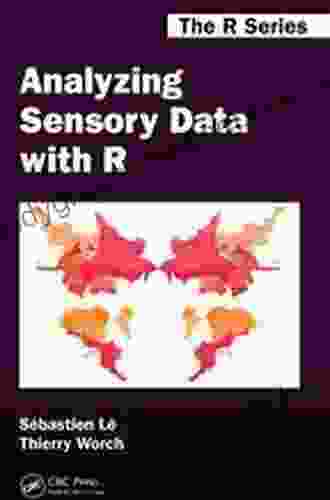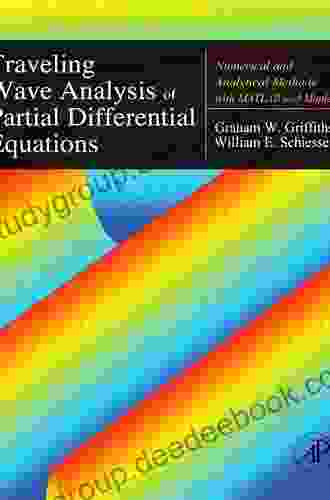Traveling Wave Analysis of Partial Differential Equations: Unraveling the Mysteries of Dynamic Systems

Partial differential equations (PDEs) are powerful mathematical tools that describe the behavior of complex systems across various scientific disciplines. From fluid dynamics and heat transfer to population growth and economic models, PDEs provide a framework to analyze the evolution of phenomena over time and space. Traveling wave analysis, a specialized technique in the realm of PDEs, offers a unique perspective on unraveling the intricate dynamics of nonlinear systems.
The Concept of Traveling Waves
Traveling waves are self-sustaining, localized disturbances that propagate through a medium without changing their shape or speed. They represent a balance between the dispersive and nonlinear effects within a system. Dispersive effects cause wave packets to spread out, while nonlinearity introduces waveform distortion. Traveling waves emerge when these opposing forces counterbalance each other, resulting in a stable propagating wave.
5 out of 5
| Language | : | English |
| File size | : | 13895 KB |
| Text-to-Speech | : | Enabled |
| Enhanced typesetting | : | Enabled |
| Print length | : | 776 pages |
| Screen Reader | : | Supported |
Mathematical Framework
The mathematical foundation of traveling wave analysis rests on finding solutions to PDEs that exhibit the characteristics of traveling waves. This involves transforming the original PDE into a system of ordinary differential equations (ODEs) that govern the behavior of the wave. The key step lies in identifying the appropriate coordinate system, known as the traveling wave frame, which moves along with the wave.
Methodologies
Several methodologies have been developed to perform traveling wave analysis:
- Perturbation Methods: Applied to weakly nonlinear systems, these methods generate approximate solutions through asymptotic expansions.
- Similarity Transformations: Involving a change of variables, similarity transformations seek to reduce the PDE to a simpler form.
- Numerical Methods: Computational techniques, such as finite difference and spectral methods, numerically solve the ODEs obtained from the traveling wave transformation.
Applications in Natural Systems
Traveling wave analysis has found wide-ranging applications in natural systems:
- Population Dynamics: Modeling the spread of invasive species or the evolution of symbiotic relationships.
- Fluid Dynamics: Describing the propagation of solitary waves in ocean currents or the formation of shock waves in supersonic flows.
- Chemistry: Analyzing wave phenomena in chemical reactions and diffusion processes.
Applications in Engineering
The utility of traveling wave analysis extends into the field of engineering:
- Optical Communications: Understanding the propagation of optical pulses in fiber optic cables.
- Aerospace Engineering: Designing supersonic nozzles and analyzing the behavior of shock waves in jet engines.
- Geotechnical Engineering: Modeling the propagation of seismic waves through soil and assessing liquefaction potential.
Benefits and Limitations
Benefits:
- Provides valuable insights into the dynamics of complex systems.
- Reveals underlying mechanisms responsible for the emergence of traveling waves.
- Facilitates the design and optimization of systems based on wave propagation principles.
Limitations:
- Limited to systems that admit traveling wave solutions.
- Finding exact solutions can be challenging, especially for highly nonlinear systems.
- May require extensive computational resources for numerical simulations.
Traveling wave analysis of partial differential equations is a powerful analytical tool that has revolutionized our understanding of complex phenomena in nature and engineering. By unraveling the dynamics of traveling waves, scientists and engineers gain invaluable insights into the behavior of diverse systems, enabling the design of innovative technologies and the prediction of natural processes. As computational power continues to advance, traveling wave analysis will undoubtedly remain an indispensable tool in the pursuit of scientific discovery.
5 out of 5
| Language | : | English |
| File size | : | 13895 KB |
| Text-to-Speech | : | Enabled |
| Enhanced typesetting | : | Enabled |
| Print length | : | 776 pages |
| Screen Reader | : | Supported |
Do you want to contribute by writing guest posts on this blog?
Please contact us and send us a resume of previous articles that you have written.
 Novel
Novel Page
Page Chapter
Chapter Story
Story Genre
Genre Paperback
Paperback Newspaper
Newspaper Paragraph
Paragraph Sentence
Sentence Bookmark
Bookmark Glossary
Glossary Bibliography
Bibliography Preface
Preface Footnote
Footnote Scroll
Scroll Codex
Codex Tome
Tome Classics
Classics Narrative
Narrative Memoir
Memoir Encyclopedia
Encyclopedia Thesaurus
Thesaurus Character
Character Librarian
Librarian Card Catalog
Card Catalog Borrowing
Borrowing Stacks
Stacks Study
Study Research
Research Scholarly
Scholarly Reserve
Reserve Academic
Academic Reading Room
Reading Room Rare Books
Rare Books Special Collections
Special Collections Interlibrary
Interlibrary Literacy
Literacy Study Group
Study Group Storytelling
Storytelling Reading List
Reading List Julian Dodd
Julian Dodd Katherine Turk
Katherine Turk Riley Rose
Riley Rose Patricia Carlin
Patricia Carlin Nicholas Thompson
Nicholas Thompson Victor Allenspach
Victor Allenspach Minka Kent
Minka Kent Frances Gilbert
Frances Gilbert Carolyn Keene
Carolyn Keene Laura Doyle
Laura Doyle David Hillson
David Hillson David Cantwell
David Cantwell Henryk Wieniawski
Henryk Wieniawski K Robicheau
K Robicheau Todd Shepard
Todd Shepard Shashi Tharoor
Shashi Tharoor M G Harris
M G Harris Renee Evenson
Renee Evenson Jay F Hemdal
Jay F Hemdal George Greenberg
George Greenberg
Light bulbAdvertise smarter! Our strategic ad space ensures maximum exposure. Reserve your spot today!

 Hayden MitchellThe Hits and the Flops: A Journey Through the Ups and Downs of Music History
Hayden MitchellThe Hits and the Flops: A Journey Through the Ups and Downs of Music History
 Julian PowellUnderstanding Dance by Graham McFee: A Comprehensive Exploration of the Art...
Julian PowellUnderstanding Dance by Graham McFee: A Comprehensive Exploration of the Art... Walt WhitmanFollow ·19.1k
Walt WhitmanFollow ·19.1k Vic ParkerFollow ·18.1k
Vic ParkerFollow ·18.1k Milan KunderaFollow ·5.6k
Milan KunderaFollow ·5.6k Gary CoxFollow ·7.4k
Gary CoxFollow ·7.4k Garrett BellFollow ·17.3k
Garrett BellFollow ·17.3k James HayesFollow ·5.3k
James HayesFollow ·5.3k Isaiah PriceFollow ·7k
Isaiah PriceFollow ·7k Jason ReedFollow ·19.9k
Jason ReedFollow ·19.9k

 H.G. Wells
H.G. WellsAnalyzing Sensory Data With Chapman Hall Crc The Series:...
Sensory data...

 Garrett Bell
Garrett BellThe Devil in the Flesh: A Haunting Tale from the Depths...
Nestled amidst the...

 Quentin Powell
Quentin PowellThe Art of Love: A Journey into Intimacy, Desire, and the...
Love is one of the most...

 Bobby Howard
Bobby HowardRV Inspection Deal Breakers: A Comprehensive Guide to...
Purchasing a recreational vehicle (RV)...

 Jordan Blair
Jordan BlairLong Way Home: A Journey Through the Piano and Vocal...
The piano and vocal chords are two of...
5 out of 5
| Language | : | English |
| File size | : | 13895 KB |
| Text-to-Speech | : | Enabled |
| Enhanced typesetting | : | Enabled |
| Print length | : | 776 pages |
| Screen Reader | : | Supported |










